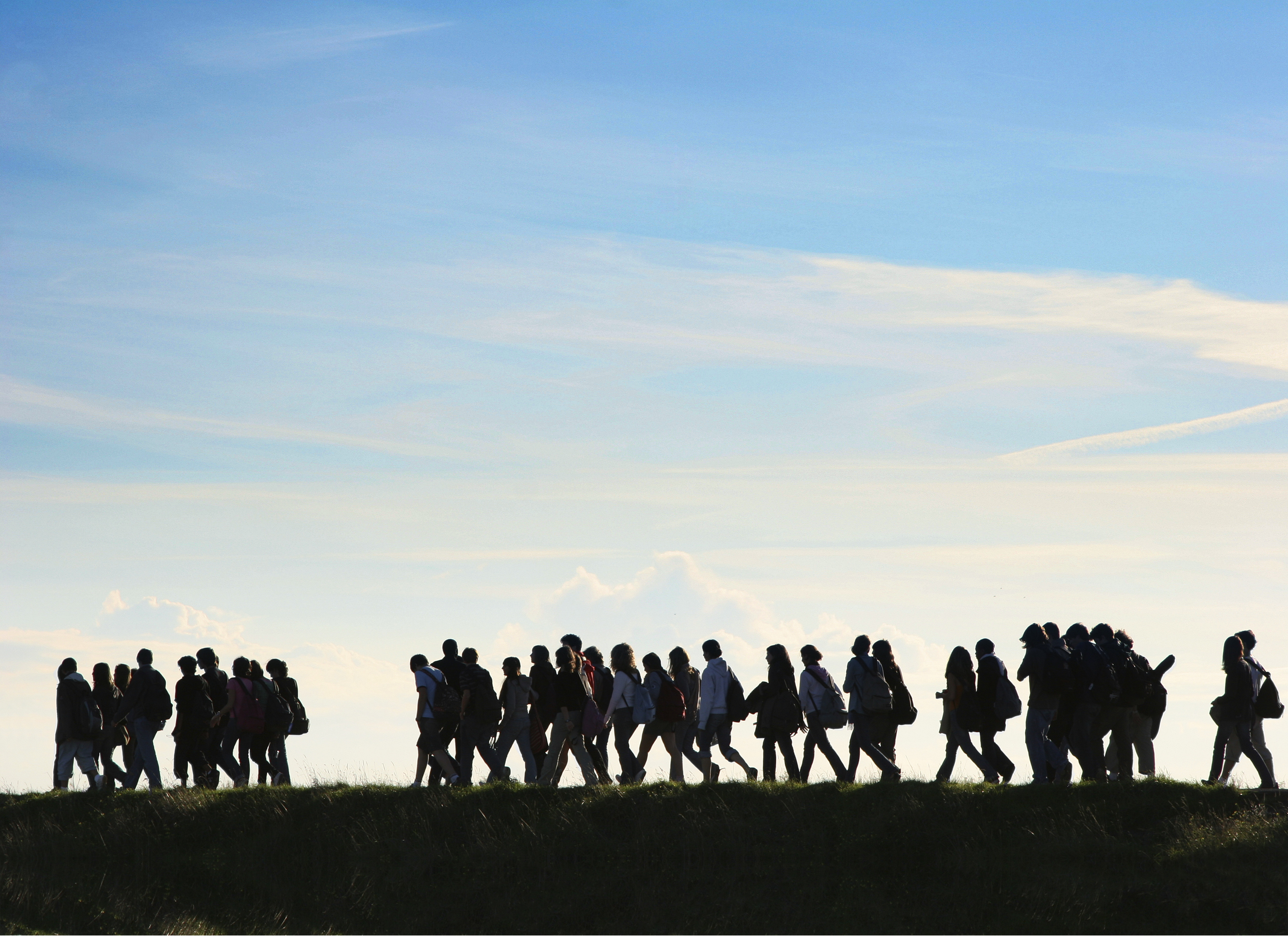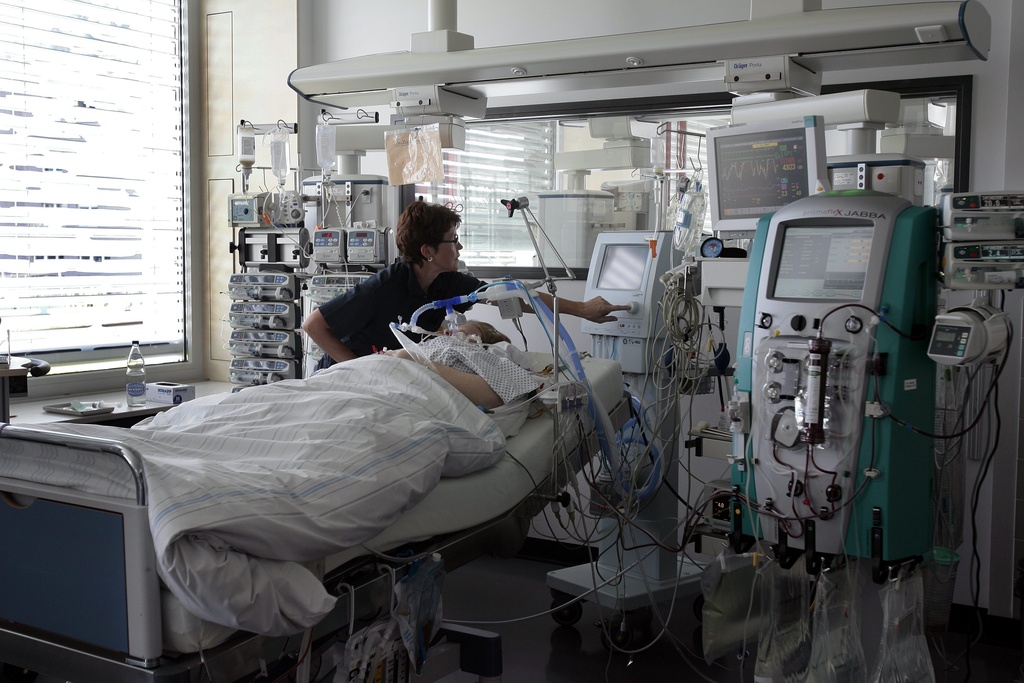Date with death: Swiss develop crystal ball

Wondering why you’re suicidal, or if living close to an airport increases heart attack risk? If you live in Switzerland, researchers may have answers to these questions.
Adrian Spörri, project manager of the Swiss National Cohort (SNC), tells swissinfo.ch what censuses are revealing about health, disease and life expectancy of the Swiss population.
This week, an SNC study using data from the 2000 census found that Catholics commit suicide less often than Protestants, and Protestants less often than people with no religious affiliation.
Since the SNC was launched in earnest in 2005, various projects have been completed, investigating a range of factors that impact on life expectancy or risk of disease, such as living close to airports, power lines or at higher altitudes.
Based on the 1990 and 2000 Swiss censuses, the SNC is a one of the largest population-based cohorts worldwide, covering several distinct cultural, linguistic and geographical regions within the same healthcare system.
Spörri is an epidemiologist at the Institute of Social and Preventive Medicine at Bern University.
swissinfo.ch: How does the SNC compare with cohorts from other countries?
Adrian Spörri: In terms of information, it is quite similar to what other countries have as well. But there are a few things that are really unique. The Swiss census is very complete. We have the records of 98 per cent and that’s quite high.
Secondly, Switzerland offers the unique opportunity to study demographic, social and geographical differences in a multicultural society (German, French and Italian language regions) in a rather homogenous administrative, legislative and political setting.
The third point is the wealth of information on different levels, the personal level – these are socio-demographic variables like marital status, place of residence, date of birth, religious affiliation, education, profession, and the second level is the household. So we know who lives with whom, and how many people are in a household.
swissinfo.ch: What influence could factors like these have on life expectancy?
A.S.: We know that mortality rates are much lower for married people but what we can do with the SNC is compare whether it’s just being married or living together with somebody else. And this wouldn’t be possible if we just had information on a personal level.
swissinfo.ch: You also operate on a third tier, using geo-referencing of houses, so you know exactly where people live and what kind of infrastructure is located in their proximity. Why is that important?
A.S.: It has to be said, we only use the geo-codes for specific projects because they are not normally provided with census information. We have to negotiate a contract for each project where we want to use geo codes.
Geo codes are very important as soon as you want to understand environmental exposures. When you want to know how close people live to large roads, and we just finished a study looking at airport noise. We also did a study looking at the effect of exposure to power lines.
swissinfo.ch: Does living close to power lines or airports decrease life expectancy?
A.S.: We weren’t looking at life expectancy in these cases, but myocardial infarction [heart attacks] for airport noise. We found the risk is higher for people living very close to an airport. And we can adjust differences in education, or age or nationality in our statistical models. Things that we know affect mortality risk. For example, people with a bit more money don’t want to risk living close to an airport. But even after controlling for these effects we found that people living close to airports have higher risks. In another study, we looked at exposure to power lines and Alzheimer’s.
swissinfo.ch: There also must be gaps, or missing links, in the data you have collected. What are they?
A.S.: There are some limitations. First of all technical. We were not able to link all individual records from one census to another or from the census to the mortality registry. We are missing about six or seven per cent of the death records. And we don’t have any information about people’s health behaviour. We only know whether they died, and cause of death but we don’t know about their lifestyle, such as drinking or smoking habits.
swissinfo.ch: But these kinds of survey are done.
A.S.: Yes, there are Swiss health surveys, and a future project will try to link this information to the SNC. But these are cross-sectional studies, looking at a sample of the population at a specific time.
swissinfo.ch: How can the SNC track radical changes in lifestyle such as the importance of mobile phones in people’s daily lives – a change that has occurred since the last census in 2000?
A.S.: We can combine the information from mobile phone providers and compare this information with, for example, brain tumour mortality. So there is an indirect way of looking at these kind of associations. But one of the limitations of the SNC is that it’s based on census information which is just done every ten years.
swissinfo.ch: A project like this is never complete. Do you think you will reach a point when detailed conclusions can be drawn about life expectancy or mortality of the Swiss population?
A.S.: We’ve done some studies like that. A few years ago we looked at life expectancy based on education. We found huge differences, with more than seven years higher life expectancy at the age of 30 for men with university education compared with men who had completed compulsory schooling only.
swissinfo.ch: But that is just one factor. You are not integrating the data about exposure to power lines or airports, for example.
A.S.: I think it’s possible to do this kind of research. We haven’t done it yet, but there are many good ideas for future projects. It will never end, because one of the most important things about the cohort is to follow people over long time periods. One of our major aims will be to compare trends. For example, the socio-economic differentials in mortality. We want to know whether the differentials get bigger or smaller. When you have a longer follow up time, you can compare the 1990s with the 2000s.
swissinfo.ch: So people will be able to use this, in a way, as a crystal ball, to see how many years they still have to live, and what kind of quality of life they can expect?
A.S.: The point here is that the SNC is a platform for epidemiological studies, and epidemiology is concerned with populations. So we can draw conclusions about populations or large groups within a population but not individuals. The latter depends so much on the daily lifestyle of each individual – information we don’t have in the SNC.
The Swiss National Cohort project officially began in 2005 when financial support was guaranteed from the Swiss National Science Foundation. The SNC receives SFr1.5 million ($1.49 million) for five years.
The SNC uses the data from the 1990 and 2000 censuses. The data has been combined using statistical methods since there are no identification numbers. Researchers have had to combine records they believe belong to the same people, based on key variables such as sex, date of birth, marital status and place of residence.

In compliance with the JTI standards
More: SWI swissinfo.ch certified by the Journalism Trust Initiative





You can find an overview of ongoing debates with our journalists here. Please join us!
If you want to start a conversation about a topic raised in this article or want to report factual errors, email us at english@swissinfo.ch.